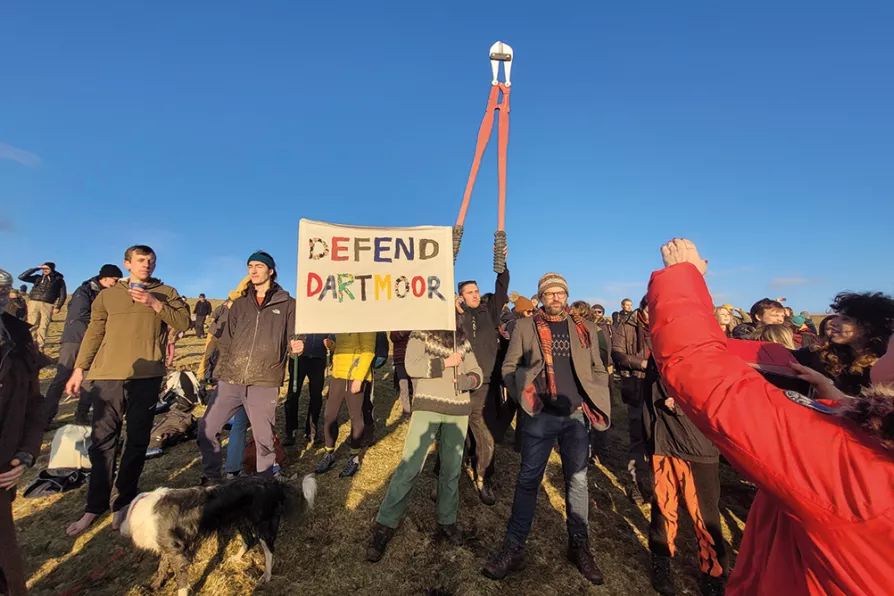The catastrophe unfolding in Gaza – where Palestinians are freezing to death in tents – is not a natural disaster but a calculated outcome of Israel’s ongoing blockade, aid restrictions and continued violence, argues CLAUDIA WEBBE

 Thousands take to Dartmoor to defend wild camping, January 2023
Thousands take to Dartmoor to defend wild camping, January 2023
WITH the right to roam back once more as a live political issue, Nick Hayes’s new book, The Trespasser’s Companion (Bloomsbury, 2022), could not be more timely. It is an informative and attractive read, and it will lift your spirits. Buy it.
In 1999 Marion Shoard’s excellent book, A Right to Roam, provided fuel for the last up-swelling of activism on this issue, while Michael Meacher introduced his “Crow Bill,” which became the Countryside and Rights of Way Act (2000). Shoard’s book was a great deal more detailed and methodically argued than Hayes’s, and remains indispensable.
Meacher’s Crow Act brought us some very partial and unevenly spread gains. Still, only 8 per cent of our countryside is free for us to wander by legal right.

JAN WOOLF examines work that aims to give viewers a material experience of the environments in the polar north and Britain equally affected by the climate crisis

MIKE COWLEY welcomes half a century of remarkable work, that begins before the Greens and invites a connection to — and not a division from — nature

ALEX DITTRICH hitches a ride on a jaw-dropping tour of the parasite world

This year’s march and swim in a reservoir in the Peak District will continue the fight for 'access for all' in a nation where 92 per cent of land remains inaccessible to the public, writes SHAILA SHOBNAM










